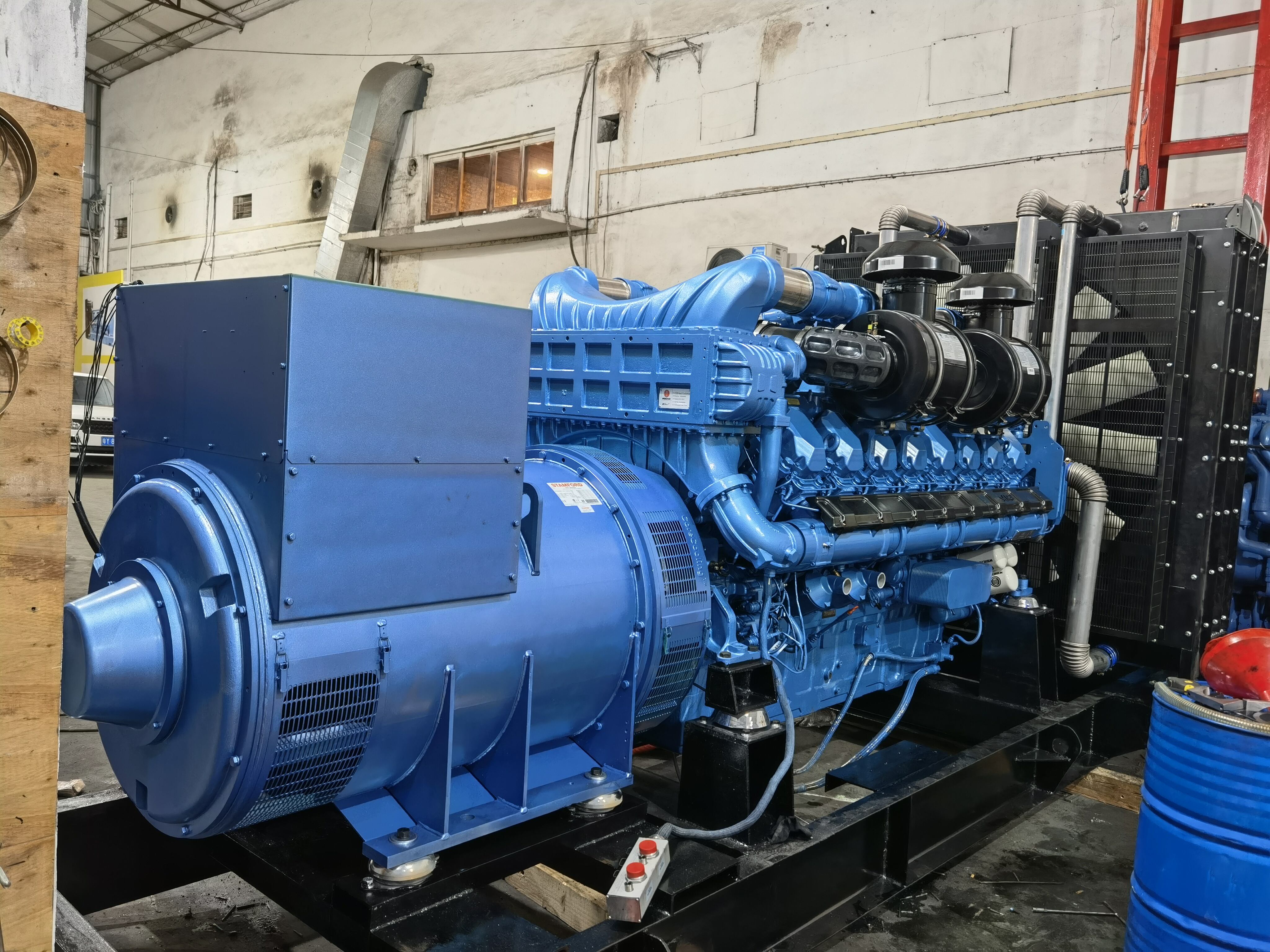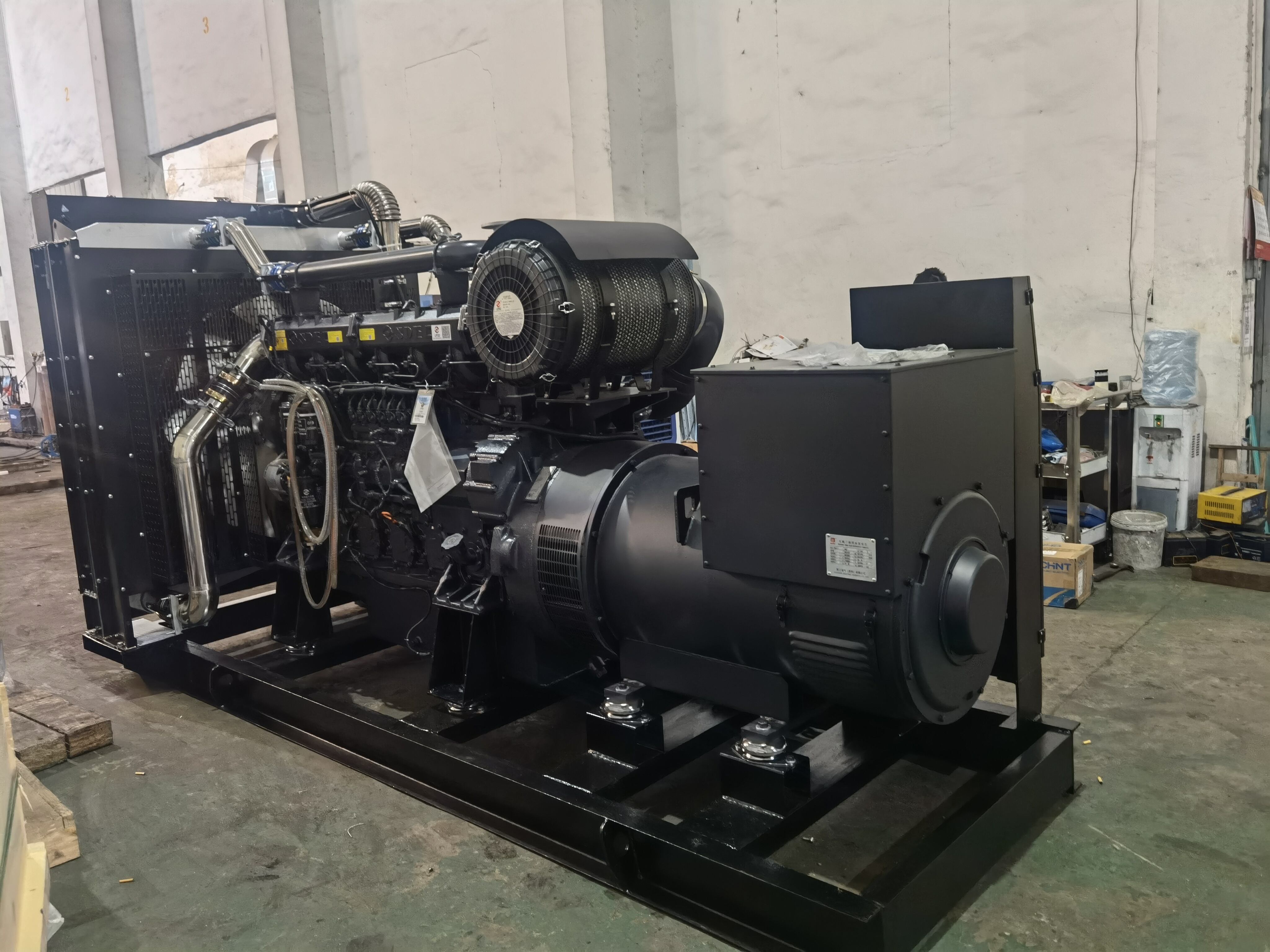فهم المخاطر الحرجة لتحميل الزائد للمولدات
طاقة المولدات تُعد أنظمة احتياطية حيوية أثناء الانقطاعات والعمل في المناطق النائية، لكن يعتمد موثوقيتها بشكل كبير على الاستخدام الصحيح. مولد تشكل حالات التحميل الزائد مخاطر جدية قد تؤدي إلى تلف المعدات والمخاطر الكهربائية وفشل النظام بالكامل. من الضروري فهم هذه المخاطر واتخاذ تدابير وقائية لكل من المستخدمين المنزليين والتجاريين لمولدات الطاقة.
عندما يتعرض المولد لطلب على الحمل يتجاوز قدرته المقدرة، فإنه يدخل حالة خطرة يمكن أن تُحدث سلسلة من المشاكل. إن الضغط الواقع على النظام لا يهدد فقط مكونات المولد، بل يشكل أيضًا مخاطر على الأجهزة المتصلة وأنظمة الكهرباء في المباني. يُعد هذا الدليل الشامل استكشافًا لكامل نطاق مشكلات الإحمال في المولدات ويقدم حلولًا مفصلة لضمان تشغيل آمن وفعال.
الأسباب الشائعة وعلامات التحذير من إحمال المولد
المؤثرات الرئيسية التي تؤدي إلى حالات إحمال المولد
تحدث حالة إحمال المولد عادةً عندما يقوم المستخدمين بتوصيل الكثير من الأجهزة أو الأدوات الكهربائية في نفس الوقت. غالبًا ما تقلّل المنازل والمكاتب الحديثة من تقدير متطلبات الطاقة الإجمالية لديها، مما يؤدي إلى فرض طلب مفرط على أنظمة الطاقة الاحتياطية الخاصة بها. تشمل السيناريوهات الشائعة تشغيل عدة أجهزة كهربائية ذات استهلاك عالي للطاقة مثل أجهزة تكييف الهواء والسخانات الكهربائية، أو توصيل عدد كبير جدًا من الأجهزة الإلكترونية أثناء انقطاع التيار الكهربائي.
عامل آخر مهم هو التيار اللحظي الذي تحتاجه بعض الأجهزة عند التشغيل. تحتاج المحركات والضواغط في الثلاجات وأجهزة التكييف والأدوات الكهربائية إلى طاقة أكبر بكثير عند التشغيل مقارنة باستهلاكها أثناء التشغيل المستمر. قد يؤدي عدم أخذ هذه متطلبات التيار اللحظي بعين الاعتبار إلى تحميل المولدات فوق حدود التشغيل الآمن دون قصد من المستخدم.
التعرف على مؤشرات التحذير
قبل أن يحدث ارتفاع كامل في الحمل على المولد، تظهر عادةً عدة علامات تحذيرية. قد يُصدر المولد أصواتًا غير طبيعية، مثل ضجيج المحرك المُجهد أو نمط تشغيل غير منتظم. قد تؤدي تقلبات الجهد إلى خافت أو ارتعاش في الإضاءة، وقد تعمل الأجهزة المتصلة بشكل غير منتظم. تشير هذه الأعراض إلى أن المولد يعاني من صعوبة في تلبية متطلبات الطاقة.
بالإضافة إلى ذلك، تحتاج العلامات المادية مثل الحرارة الزائدة أو الروائح غير المعتادة أو الدخان الناتج عن وحدة المولد إلى انتباه فوري. إن تكرار انقطاع الدوائر الكهربائية يُعد بمثابة آلية تحذيرية مُدمَجة، تشير إلى أن النظام يحاول حماية نفسه من ظروف التشغيل الزائدة.
العواقب الفورية والطويلة الأمد لحدوث الحمل الزائد على المولد
تلف المكونات وتدهور النظام
عند حدوث الحمل الزائد على المولد، يمكن أن يتسبب ذلك في تلف فوري للمكونات الداخلية. إن سحب التيار الزائد يُنتج حرارة تفوق المواصفات المُصمَّمة، مما قد يؤدي إلى إتلاف الملفات والمحامل وأجزاء أخرى مهمة. يمكن أن يؤدي هذا الإجهاد الحراري إلى تدهور العزل الكهربائي وحدوث دوائر قصر وتلف دائم في مولد التيار المتردد للمولد.
تتأثر مكونات المحرك أيضًا في ظل ظروف التشغيل الزائد. يؤدي زيادة الإجهاد الميكانيكي إلى تسريع التآكل في المكابس والحلقات والمحامل. قد يصبح نظام التبريد غير قادر على التعامل مع الحمل، مما يؤدي إلى احتمال انسداد المحرك أو فشله. وغالبًا ما تؤدي هذه المشكلات إلى إصلاحات مكلفة أو استبدال المولد بالكامل.
المخاطر الأمنية والحرائق
يؤدي الحمل الزائد على المولد إلى مخاطر أمان جسيمة تتجاوز الضرر الذي يصيب المعدات. يمكن أن تؤدي زيادة تدفق التيار الكهربائي إلى انصهار عزل الأسلاك، مما قد يتسبب في حرائق كهربائية. كما يمكن أن تؤدي درجات الحرارة العالية الناتجة أثناء ظروف التشغيل الزائد إلى اشتعال المواد القابلة للاشتعال القريبة أو إنتاج أبخرة سامة من المكونات التي ارتفعت حرارتها.
يمتد الخطر إلى الأجهزة المتصلة وأنظمة الكهرباء في المباني. يمكن أن تتلف التقلبات الجهدية الإلكترونيات الحساسة، في حين تمثل الدوائر التي ارتفعت حرارتها مخاطر حرائق في جميع أنحاء نظام توزيع الكهرباء. كما أن سلامة الأشخاص أيضًا معرضة للخطر، مع احتمال حدوث صدمات كهربائية ناتجة عن اتصالات كهربائية معطلة.

استراتيجيات الوقاية الأساسية والممارسات الأفضل
حساب وإدارة الأحمال بشكل صحيح
تبدأ الوقاية من زيادة الحمل على المولد بإجراء حسابات دقيقة للاحمال. يجب على المستخدمين تقييم متطلبات الطاقة الخاصة بهم من خلال سرد جميع الأجهزة والأدوات التي ينوون تشغيلها في نفس الوقت. قم بتضمين كل من القدرة التشغيلية (Running Watts) والقدرة الابتدائية (Starting Watts) في هذه الحسابات، والتأكد من أن سعة المولد تتجاوز أقصى حمل متوقع بنسبة لا تقل عن 20% لضمان هامش أمان.
قم بتنفيذ استراتيجية لإدارة الأحمال من خلال إعطاء الأولوية للأجهزة الأساسية وتدوير الأحمال غير الحرجة. استخدم تقنيات تقليل الأحمال خلال فترات الذروة، وفكر في تركيب أنظمة إدارة أحمال تلقائية للمشاريع الكبيرة. يساعد المراقبة الدورية لاستهلاك الطاقة في الحفاظ على التشغيل ضمن الحدود الآمنة.
حلول الصيانة والمراقبة
يلعب الصيانة الدورية دوراً حاسماً في منع حالات زيادة الحمل على المولد. قم بجدولة فحوصات دورية للتحقق من الاتصالات الكهربائية، وتنظيف مرشحات الهواء أو استبدالها، والتأكد من عمل أنظمة الأمان بشكل صحيح. راقب مستوي وجودة الزيت، حيث أن التزييت المناسب ضروري لإدارة الحرارة أثناء التشغيل عالي الحمل.
ركّب وحافظ على أنظمة مراقبة توفر بيانات آنية حول أداء المولدات. تستطيع هذه الأنظمة تتبع إنتاج الطاقة ودرجة الحرارة وغيرها من المعايير المهمة، وتنبيه المشغلين قبل حدوث حالات التحميل الزائد. يساعد الاختبار الدوري في ظل ظروف تحميل مختلفة على تحديد المشاكل المحتملة قبل أن تصبح حرجة.
أنظمة الحماية المتقدمة والاعتبارات المستقبلية
التقنية الحديثة في منع حالات زيادة الحمل
غالبًا ما تحتوي المولدات الحديثة على أنظمة حماية متطورة تمنع حدوث أضرار بسبب زيادة الحمل. تقوم وحدات التحكم الإلكترونية بمراقبة عدة معايير في وقت واحد، مثل سحب التيار ومستويات الجهد ودرجة الحرارة. يمكن لهذه الأنظمة أن تقوم تلقائيًا بتعديل الإخراج أو إيقاف المولد عندما يتم اكتشاف ظروف خطرة.
توفر أنظمة إدارة الأحمال الذكية حماية إضافية من خلال أولوية التحكم التلقائية في الأحمال المتصلة. يمكن لهذه الأنظمة مراقبة استهلاك الطاقة في الوقت الفعلي وفصل الأحمال غير الضرورية عند الاقتراب من ظروف زيادة الحمل، مما يضمن استمرار التغذية الكهربائية للأجهزة الحرجة.
التقنيات الناشئة والتحسينات
يشمل مستقبل حماية المولدات أنظمة مراقبة متقدمة تعتمد على الذكاء الاصطناعي يمكنها التنبؤ بحالات زيادة الحمل المحتملة قبل حدوثها. تقوم هذه الأنظمة بتحليل أنماط الاستخدام والظروف البيئية لتحسين أداء المولد ومنع سيناريوهات زيادة الحمل بشكل استباقي.
ستمكّن التكامل مع أنظمة المباني الذكية والأجهزة القابلة للاتصال من تطبيق استراتيجيات إدارة الأحمال بشكل أكثر تطوراً. ستستمر قدرات المراقبة عن بُعد في التطور، مما يسمح بالاستجابة الفورية لظروف التحميل الزائد المحتملة من أي مكان في العالم.
الأسئلة الشائعة
ما السرعة التي يمكن أن يتسبب بها التحميل الزائد في الضرر للوحدة؟
يمكن أن يتسبب التحميل الزائد في الضرر للوحدة خلال بضع دقائق فقط، ويعتمد ذلك على شدة حالة التحميل الزائد. فقد تؤدي التحميلات الزائدة الشديدة إلى أضرار فورية، بينما قد تستغرق التحميلات الزائدة المعتدلة وقتاً أطول لتسبب مشاكل ملحوظة. ومع ذلك، يجب معالجة أي حالة تحميل زائد على الفور لمنع حدوث أضرار محتملة.
هل يمكن أن تسهم الظروف الجوية في حدوث تحميل زائد على الوحدة؟
نعم، يمكن أن تؤثر الظروف الجوية بشكل كبير على أداء المولدات وتساهم في حدوث حالات زيادة الحمل. تقلل درجات الحرارة المرتفعة من كفاءة التبريد، بينما يمكن أن تؤثر درجات الحرارة المنخفضة للغاية على أنظمة الوقود وقدرة التشغيل. بالإضافة إلى ذلك، يمكن أن تؤدي متطلبات الطاقة الناتجة عن الظروف الجوية (مثل زيادة استخدام أجهزة التكييف) إلى حدوث زيادة في الحمل إذا لم تتم إدارتها بشكل صحيح.
ما الدور الذي تلعبه المفاتيح الكهربائية في منع زيادة الحمل على المولد؟
تُعد المفاتيح الكهربائية ميزة أمان حيوية حيث تقوم بقطع تدفق الطاقة عندما يتجاوز التيار المستويات الآمنة. ورغم أنها توفر حماية مهمة، إلا أنه لا ينبغي الاعتماد عليها كوسيلة رئيسية لمنع زيادة الحمل. إن إدارة الحمل بشكل صحيح والمراقبة المستمرة هما أمران أساسيان للحفاظ على تشغيل آمن للمولد.

